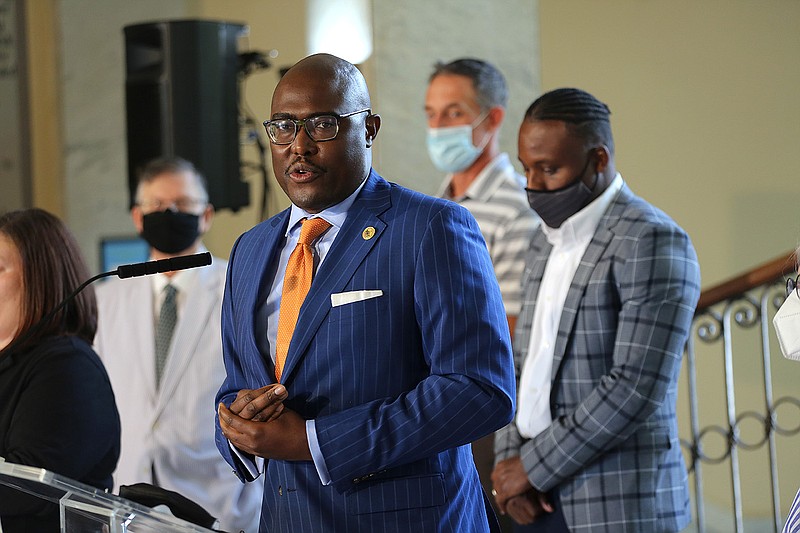Members of the Little Rock Board of Directors in unanimous voice votes on Tuesday rejected two ordinances intended to protect the historic fabric of the Little Rock Central High School neighborhood through the creation of a local-ordinance district.
Board meeting materials said city staff had recommended the measures be denied and referred back to the city's Historic District Commission, but Little Rock Mayor Frank Scott Jr. threw cold water on the idea that the proposal would go before the city board again in the future.
One of the two ordinances defeated Tuesday would have established what is known as a local-ordinance district to give the Historic District Commission oversight regarding certain changes to properties or new construction near Central High School.
The local-ordinance district's boundaries would have matched those of the Central High School Neighborhood Historic District, as listed on the National Register of Historic Places.
Sheila Miles, president of the Wright Avenue Neighborhood Association, told city board members that her group had submitted a four-page letter expressing opposition to the proposed local-ordinance district.
In the letter, residents "expressed concerns about displacement of residents and economic burdens imposed upon low- and fixed-income residents," she said.
Miles said she did not understand what a referral back to the Historic District Commission meant.
Scott later said the proposal had to go back, but suggested that commission members "will get the drift when they see a no from the city board, and you won't see it come back before the city board."
City Director Virgil Miller Jr., the Ward 1 representative, at one point noted the two neighborhoods that would be most affected by the proposal, the Central High Neighborhood Association and the Wright Avenue Neighborhood Association, had both registered their opposition.
The boundaries of the Central High School Neighborhood Historic District encompass an area just north of Central High School, from West 12th Street and Thayer Street, southeast to West Roosevelt Road and Martin Luther King Jr. Drive.
The neighborhood was added to the National Register of Historic Places in 1996. Its boundaries were expanded in 2012.
According to a city report that endorsed the creation of a local-ordinance district near Central High School, the 2012 expansion was meant "to increase the number of historically significant resources and fill the deficit of lost structures."
"Today, the Central High School Neighborhood Historic District is identified as an endangered historical resource," the report said. "The district suffers extensively from demolitions, property neglect, and incompatible alterations. The City of Little Rock has enacted multiple indirect tools to address this endangerment over the years, but these have fallen short of impacting the issue in a meaningful way."
At least 51% of properties must be designated as "contributing" to a district's historic status in order for such a district to retain its status on the National Register of Historic Places, the report said.
City board members in January approved an extension until April 19 of a temporary moratorium halting the issuance of certain demolition and exterior building permits in the neighborhood. The city board originally approved the moratorium last summer.
The only existing local-ordinance district in the city surrounds MacArthur Park.
At the moment, the Historic District Commission "reviews requests to be allowed to make changes, additions, or alterations to the exterior of structures within the [MacArthur Park Historic] District via a Certificate of Appropriateness," according to the city's website.
Besides the ordinance that would have established the new local-ordinance district, the city board on Tuesday denied an ordinance to expand the commission from seven to nine members. Members serve three-year terms.
According to the proposed ordinance, one of the new positions would have been held by an owner/occupant of property north of Wright Avenue within the Central High School local-ordinance district; the other new position would have been held by an owner/occupant south of Wright Avenue within the district.
